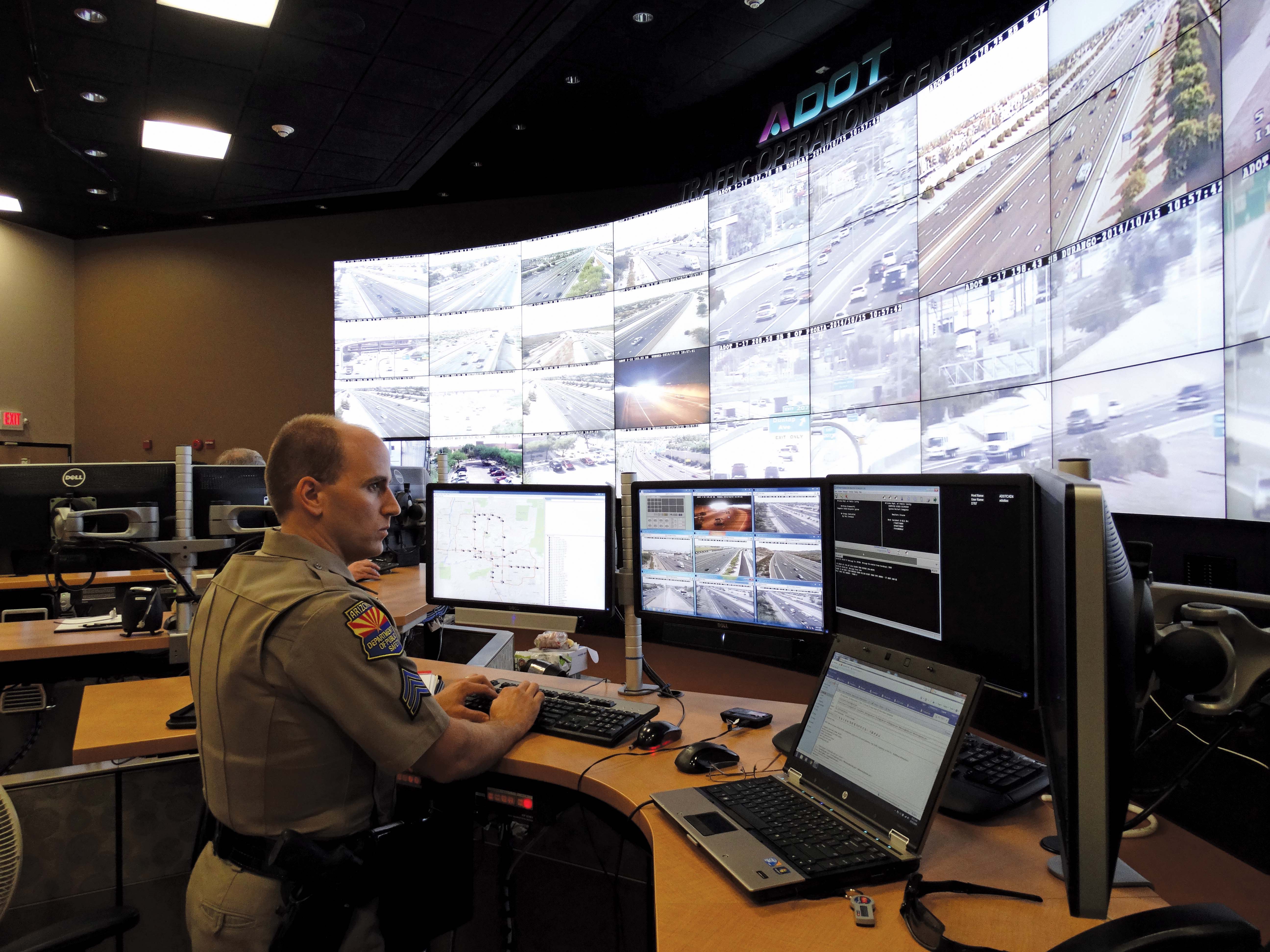
A traffic incident management project in Arizona has speeded up reopening closed lanes and saved an estimated $165m through reducing traffic delays.
The process for clearing roadway incidents on the Maricopa County freeways in Arizona has always reflected industry best practice with, for instance, a live feed of freeway cameras to the Arizona Department of Public Safety’s (DPS) dispatch centre and the City of Phoenix Fire dispatch centre. The region has nearly 480km (300 miles) of freeway connecting 27 cities and towns and three Native American Indian Communities. The moment a traffic incident is observed, operators at Arizona DOT’s traffic operations centre (TOC) alerts the Department of Public Safety’s (DPS) dispatch centre which sends troopers to the scene. Many incidents are also directly reported to DPS via 911 calls from passing motorists.
The responding troopers take with them the equipment they believe necessary given the information available, and once on scene they work with the dispatch centre in coordinating the response. Coordination and communications to manage activities between Arizona DOT and DPS is via radio communications equipment and messages through the computer aided dispatch system.
In the first nine months of 2014 this system resulted in the average time to clear an incident (the time of arrival of response vehicles to the point all vehicles and debris are removed from the crash scene) of slightly longer than 106 minutes The roadway clearance time (the average time taken to clear travel lanes) was almost 90 minutes.
Since the beginning of January 2015, one DPS trooper has been located alongside four ADOT staff within the TOC as part of a pilot project to streamline incident management and reduce clear-up times on the freeway. The pilot project is co-sponsored by the Arizona DOT and Maricopa Association of Governments (MAG), the regional planning agency. The trooper in-charge, DPS Sergeant John Paul Cartier, and the other members of his team at the TOC have secure access to the DPS’s computer aided dispatch system and radio frequencies to communicate with troopers in the field and can activate resources after camera verification.
Furthermore, based on what the troopers can see on the CCTV camera views, they pass along their assessment of the crash scene and can activate fire, emergency medical services, towing and traffic control resources as necessary. The fire and emergency medical services are provided by the local city responding to 911 calls or in response to a request from the DPS dispatch centre.
By September 2015, just nine months into the three-year pilot project, the benefits of this system have already become clear with the most striking result being a 63% reduction in the time taken to clear the roadway compared with a year earlier. That improvement comes in spite of an increase of 23% in crashes (to 13,862) in the first nine months of 2015 which actually resulted in an increase in average response time – up from 14.7 to 23.8 minutes. This increase in the crash rate is not limited to Maricopa County as crashes have increased across Arizona and the US by as much as 19%.
However, the input from Sergeant Cartier and his crew means that the troopers depart for the scene better prepared to deal with the situation they will encounter. In addition, the ongoing management of the incident has also improved and, for instance, other services may already on their way – alerted by the troopers in the TOC instead of waiting to be summoned once their colleagues arrive on the scene.
As a result the average time to clear the roadway after non-injury crashes (of which there were 10,061) was cut by 54 minutes to 29 minutes (a 63% reduction). With the 3,767 crashes involving injuries, the time saving was 51 minutes (90 minutes down to 39) and represents a 57% reduction. In the case of the most protracted incidents, the 34 fatal crashes, the average roadway clearance time has almost been halved to 172 minutes from the pre-pilot figure of 329 minutes.
In evaluating the figures for all the freeways’ 13,800 crashes, even when factoring in the longer response time (due to more crashes), the average time from when a trooper is dispatched to a crash scene to clearing the roadway has almost halved (100 minutes down to 55.5)
MAG has estimated that by reducing the time taken to clear the roadway, around 8.4 million vehicle hours were saved both on the freeways and in the surrounding roads, in the first nine months of the pilot scheme. This was arrived at using productivity savings estimated using a regional traffic simulation model that compared the total traffic delay on the road network with the freeway crashes in 2014 and with those in 2015. Using the $16.79/hr figure for value of time calculated by the Texas Transportation Institute for its 2011 Mobility Report, MAG puts the savings in the first nine months of the pilot at $165million. This analysis does not include any potential savings due to reductions in secondary crashes.
Incident clearance time (the time to remove vehicles from hard shoulders) has also been reduced by 45% to almost 59 minutes. Incident duration (the time the responding trooper was dispatched to the time when all vehicles and debris are removed from view) showed a more modest reduction of 11% to around 73 minutes.
While this appears a somewhat mixed picture, beyond the increase in response time for the reasons mentioned earlier, all other operations have been carried out quicker than before. This is because the presence of the DPS troopers at the TOC has improved their ability to actively manage traffic incidents through utilising the centre’s resources. Beyond the traffic incidents, the troopers have the authority, training and experience to also respond to law enforcement situations.
The pilot has also provided an added benefit in the synergy it has created through the DPS team becoming better informed about traffic management functions. In turn, the troopers have provided valuable input to traffic management problem solving from an enforcement viewpoint. So although the pilot still has more than two years left to run, both ADOT and MAG believe it has already proved the tremendous value of co-locating traffic control and enforcement staff in the larger US metropolitan regions - and potentially in others too.










